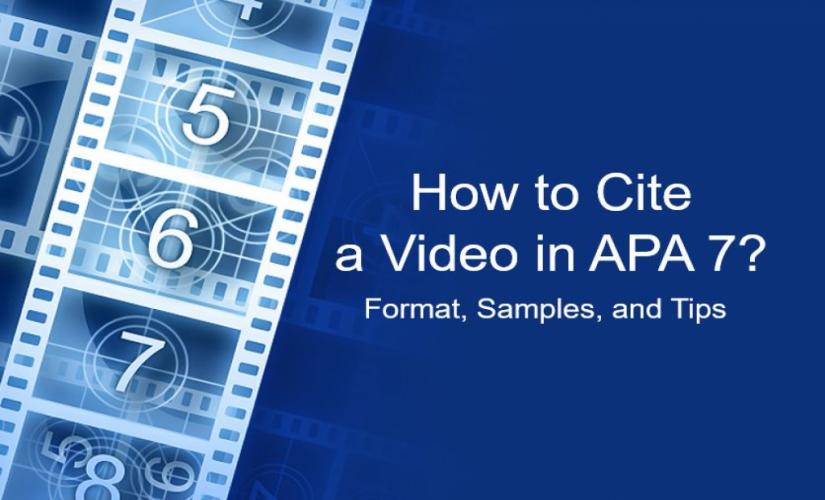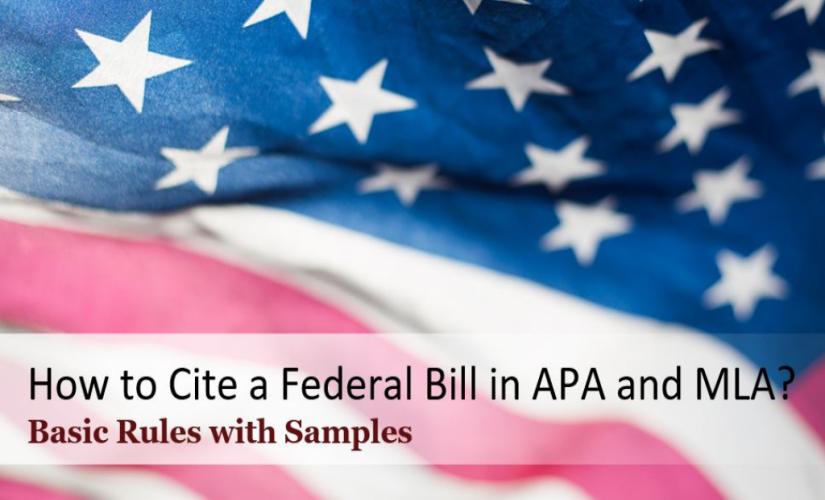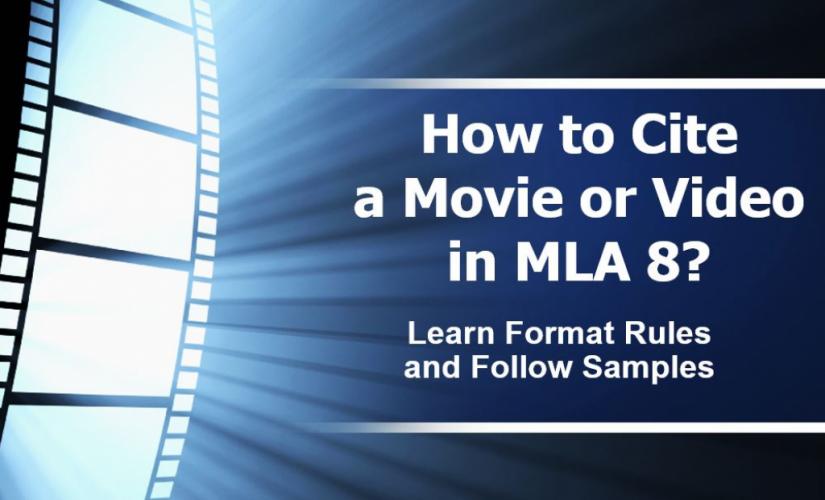Video sources are quickly becoming a popular source for academic research. Basically, the American Psychological Association (APA) referencing style outlines guidelines for the citation of video sources. Also, this guide begins with a comprehensive definition of a video source to ensure that students can identify situations where video citation formats are applicable. Then, the manual focuses on three main types of video sources: YouTube videos, films, and other videos, and highlights citation formats under unique conditions, such as unknown authors with usernames, known authors, and a group of authors. Besides the creation of standard in-text citations and reference list entry formatting, the manual provides an overview of the use of footnotes in the video source citation and concludes with a critical analysis of the differences between the sixth and seventh editions of APA referencing rules for video sources. Hence, students need to learn how to cite a video in APA.
Video Definition
A video is a form of audio-visual media that contains both audio and visual components. Basically, a visual component of a video appears as a continuous flow picture frames at a rate that creates a sense of motion of objects under observation. Furthermore, the motion of picture frames should occur automatically. In turn, a PowerPoint presentation where the presenter manually clicks a controller to move from one slide to another is not a video. Then, audio-visual components can be music, voices, or any other sounds. Also, the length of videos can vary from hours to minutes and seconds. Then. large film production houses and organizations are no longer the sole producers of videos. In modern society, an individual can create a video and share it on online platforms without going through traditional video production processes.

Conditions for Citing a Video in the APA Format
The availability of the video to the target audience is a crucial consideration. For instance, if the audience cannot readily access a video source, authors do not follow standard in-text citation and reference list entry formats. Instead, authors provide an in-text citation that identifies a video as a piece of personal communication. Moreover, the bibliographical information for video sources must be available because it aids in ascertaining the authenticity of video sources. Although it is not an explicit rule, it is a good practice to avoid the use of video sources, which lack adequate bibliographical information for the audience to judge the weight of their contribution to scholarly works.
How to Cite a YouTube Video in APA 7
1. Citing a YouTube Video with a Known Author in APA
APA 7 Reference List Entry for a YouTube Video
- An author of any YouTube video is the uploader of the video, even though the person or group may not be the creator of the work.
- Authors may mention the names of creators in the text if it is necessary information for the audience.
- If the name of the author is available, the username becomes an optional element for the citation of YouTube videos.
Structure:
Uploader, D. D. [Username]. (Upload year, month date). Title of the YouTube video [Description of the audio-visual work]. Streaming platform’s name. Universal resource locator.
Example:
Brooks, L. J. [Green Lady#1]. (2020, December 24). Our role in climate change [Video]. YouTube. https://www.youtube.com/_watch_video1232
APA 7 In-Text Citation for a YouTube Video
Note: If writers want to indicate a specific scene, they may use the hours:minutes:seconds format of an in-text citation where this episode starts and hours:minutes:seconds of ending. However, it is not mandatory.
Parenthetical: (Brooks, 2020, 01:15:36-01:17:13)
Narrative: According to Brooks (2020), climate change is a controllable phenomenon (01:15:36-01:17:13).
Footnote for a YouTube Video
- An author cannot reproduce a YouTube video in a piece of academic text, which implies that the use of footnotes for copyright attribution is not viable for YouTube video sources.
- Authors employ footnotes in the form of content notes.
- Content notes are not identical to reference list entries because they do not contain complete bibliographical information.
- Content notes utilize the standard author-date in-text citation to refer to YouTube video sources.
In-text appearance:
Stein’s climate model may be partly responsible for the wrongful assignment of fault to policymakers.1
Content note:
1 For detailed explanations on the assumptions of Stein’s climate model, see Brooks (2020).
2. Citing a YouTube Video with an Unknown Author in APA by Using a Nickname Available
YouTube Reference List Entry with an Unknown Author
- Authors must reproduce the username accurately regardless of unconventional spelling and capitalization and the presence of special characters.
Structure:
Username. (Upload year, month date). Title of the YouTube video [Description of the audio-visual work]. Streaming platform’s name. Universal resource locator.
Example:
Green Lady#1. (2020, December 24). Rethinking the future of our environment [Video]. YouTube. https://www.youtube.com/_watch_video1232
YouTube In-Text Citation with an Unknown Author
Parenthetical: (Green Lady#1, 2020)
Narrative: Green Lady#1 (2020) notes that policymakers play a central role in managing climate change.
YouTube Footnote with an Unknown Author
In-text appearance:
The findings of this study demonstrate that industrialization is no longer the primary contributing factor to climate change in the 21st century.1
Content note:
1 See Green Lady#1 (2020) for comparable findings using Stein and Carmelite’s climate change model.
3. Citing a YouTube Video with a Group Author in APA
Reference List Entry for a Group of Authors
Structure:
Organization or Group Name. (Upload year, month date). Title of the YouTube video [Description of the audio-visual work]. Streaming platform’s name. Universal resource locator.
Example:
The University of Canberra. (2020, November 4). Creating user profiles on the e-learning platform [Video]. YouTube. https://www.youtube.com/_watch_video12
In-Text Citationfor a Group of Authors
Parenthetical: (University of Canberra, 2020)
Narrative: The University of Canberra (2020) prohibits the use of abusive phrases in usernames.
Footnote for a Group of Authors
In-text appearance:
A shortcoming of this research was the failure to consider the effect of restrictive policies on interaction on university websites.1
Content note:
1 The University of Canberra (2020) outlines strict regulations for creating usernames, which suppresses the freedom of students to build an online image.
4. Citing a YouTube Video from a Channel in APA
Reference List Entry for a YouTube Channel
Structure:
Content Uploader’s Name. (Online publication date). Title of a specific tab on the YouTube channel [Description of the audio-visual work]. Retrieved month date, year, from universal resource locator
Example:
Norton, K. L. (n.d.). Videos [YouTube channel]. YouTube. Retrieved August 4, 2020, from https://www.youtube.com/_user_1233/video
In-Text Citation for a YouTube Channel
Parenthetical: (Norton, n.d.)
Narrative: Norton (n.d.) provides unique insight from his 30-year research career.
Footnote for a YouTube Channel
In-text appearance:
Researchers in contemporary society are creating a video catalog of their work.1
Content note:
1 For an example of an exemplary video catalog, see Norton (n.d.).
5. Citing a Comment Under YouTube Video in APA
Reference List Entry for a Comment
Structure:
Author, A. A. (Online publication year, month date). A maximum of the first 20 words of the comment under YouTube Video [Description of the audio-visual work]. Platform Name. Universal resource locator
Example:
John, K. T. (2018, January 12). Defining crime from a social perspective is becoming increasingly difficult because society is normalizing “soft crimes.” Specifically, soft crimes involve [Comment]. YouTube. https://www.youtube.com/_watch_1233/videos
In-Text Citation for a Comment
Parenthetical: (John, 2018)
Narrative: According to John (2018), the definition of crime has changed over the past centuries.
Footnote for a Comment
In-text appearance:
The findings of this study are a clear reflection of the complicated society’s view of crime.1
Content note:
1 Non-conventional definitions of crime are becoming popular among leading criminologists, see John (2018).
6. Citing a Film or Movie in APA
Reference List Entry for a Film/Movie
- An author of a film is the director of a movie.
- In a case where the director’s name is not available, researchers may utilize the name of any person that plays a similar role in the making of the film to ease the process of its retrieval.
- The inclusion of the mode of watching employed by the researcher is not necessary for film citations.
- Authors may include additional information in instances where it may be useful to identify the source, for example, the educational DVD version of a movie contains some content that is not present in the public release version of the film.
- The additional information is separated from the media type, “Film,” using a semicolon.
- APA referencing style does not provide any rules concerning the wording of additional descriptive information, but it is essential to maintain conciseness.
- An English translation of film titles in non-English languages appears immediately after the title in square brackets.
Structure:
Author, A. A. (Role in making the film). (Release year). Title of the film [English translation of the film’s title] [Description of the audio-visual work; version]. Production Company.
Example:
More, J. L. (Director). (2017). Nuestro pasado en blanco y negro [Our past in black and white] [Film; educational DVD]. Wayne and Jack’s Production House.
In-Text Citation for a Film/Movie
Parenthetical: (More, 2017)
Narrative: More (2017) emphasizes the theme of racism through the satirical use of racial slurs.
Footnote for a Film/Movie
In-text appearance:
The satirical presentation of racism that dominated theatre halls in the 1950s has come back to life in modern films.1
Content note for a Film/Movie:
1 More (2017) employs the satirical approach, although his play borrows heavily from a play written in 1992, which uses racial slurs to depict hostility.
7. Citing Other Videos in APA
Reference List Entry for Other Types of Videos
Structure:
Uploader, D. D. (Upload year, month date). Title of the video [Description of the audio-visual work]. Publisher’s Name. Universal resource locator.
Example:
Simmons, D. N. (2020, June 12). Changes in APA 7 [Webinar]. American Writers Association. https://writersassociation/apa7/video234
In-Text Citation for Other Types of Videos
Parenthetical: (Simmons, 2020)
Narrative: Simmons (2020) explains that the recent changes in the APA referencing style.
Footnote for Other Types of Videos
In-text appearance:
APA 7 style contains more elaborate guidelines for online sources than APA 6 manual.1
Content note:
1 Simmons (2020) provides a detailed analysis of the new changes for online sources citation in APA 7.
APA 6 vs. APA 7
On the whole, APA 6 did not provide video sources much attention compared to APA 7. Basically, APA 6 contains only one guideline concerning video citation, which authors use as a template for the citation of all video materials. In turn, APA 7 referencing style discusses various forms of video sources and specifies the formatting styles for the individual sources. Also, APA 7 identifies a variety of video sources, for example, TV series webisodes, TED talks, recorded webinars, streaming videos. As a result, authors of APA 7 has made a decent effort to discuss referencing formats for the most common video sources, which is vital in contemporary society where digital publication has become the norm.
1. Videos Unavailable Online
Illustration for Videos Unavailable Online
Specifically, the standardized video citation in APA 6 differs from the APA 7 citation is distinguishable because of two main elements. In this case, the illustration below highlights unique elements of APA 6 and APA 7 citations for videos that are not available online.
APA 6: Jacks, A. D. (Director). (2020). Blackjacks and pawns [Motion picture]. England: Wayne and Brothers.
APA 7: More, J. L. (Director). (2017). Nuestro pasado en blanco y negro [Our past in black and white] [Film; educational DVD]. Wayne and Jack’s Production House.
Discussion on Videos Unavailable Online
Firstly, the APA 7 video citation format does not make an emphasis on the indication of the location of the publisher for standalone films, which are not available online. In this case, APA 7 requires writers to provide the name of the production house only, while APA 6 needs the physical location of the production company to precede the name of the production company. Secondly, the APA 6 audio-visual work description is “Motion picture,” while APA 7 prefers the use of the description “Film” for videos that are unavailable online. Hence, two descriptions refer to the same type of audio-visual source despite the use of different words.
2. Videos Available Online
Illustration for Videos Available Online
APA 6 citation for video sources that are available online has one significant inconsistency with APA 7 citation. In turn, the examples below show the differences between APA 6 and APA 7 citations for videos that are available online.
APA 6: American Doctors Organisation (Producer). (2020). Nursing standards for mental healthcare [DVD]. Available from http://www.ado.org/videos_123
APA 7: Simmons, D. N. (2020, June 12). Changes in APA 7 [Webinar]. American Writers Association. https://writersassociation/apa7/video234
APA 7 (No publication date): Norton, K. L. (n.d.). Videos [YouTube channel]. YouTube. Retrieved August 4, 2020, from https://www.youtube.com/_user_1233/video
Discussion on Videos Available Online
The introductory phrase for the universal resource locator “Available from” is a unique feature of APA 6 citation. In APA 7, the citation format does not require writers to include any introductory phrase before the universal resource locator. Also, if the video does not have a known online publication date, APA 7 suggests that writers should provide the retrieval date for the online resource. Therefore, some APA 7 citations may contain the introductory phrase “Retrieved [insert date], from.”
Final Remarks on How to Cite a Video in APA
APA 7 referencing style discusses the citation of videos extensively, and it is unlikely that students will encounter any form of a video source, which this manual does not cover. Hence, students should learn how to cite a video in APA to provide high-quality papers without plagiarism. Moreover, the citation structure for “Other Videos” provides a flexible format for any non-conventional video sources that a researcher may encounter while preparing an academic paper. Then, authors should pay much attention to universal resource locator elements of any video source because the failure of the link address to redirect readers to the source makes the references to the source lose their value to the paper’s central argument. Consequently, researchers should refrain from the use of video sources that do not exist on stable online platforms because it increases the likelihood of link failure.
Takeaway
- Citations for video sources should contain the author’s name, online publication or release date, the title of the video, a description of the video type, publisher’s name, and universal resource locator.
- The elements present in a video source citation may vary slightly depending on the nature of the source.
- The italicization of titles of standalone video sources is standard practice.
- Authors use sentence case styling for the titles of video sources.
- The description of video sources is essential because it allows the audience to distinguish various forms of videos.


